Keep these 31 foods OUT of your freezer
High-risk foods your freezer hates

Nitr/Shutterstock
Whether it's preserving batch-cooked meals, safely storing leftovers or keeping convenience foods in peak condition, the freezer is one of the handiest, hardest working kitchen appliances. But not every food is robust enough to withstand its sub-zero temperatures – while dehydration, rehydration and freezer burn can affect many delicate dishes and ingredients. To help you figure out what should be kept where, here we reveal the foods that should never be kept in the freezer (and where to store them instead).
Read on to discover 31 foods you should NEVER freeze, counting down to the biggest no-no of them all.
We've based our ranking on the impact of freezing on each ingredient, backed by expert advice and research.
31. Jelly
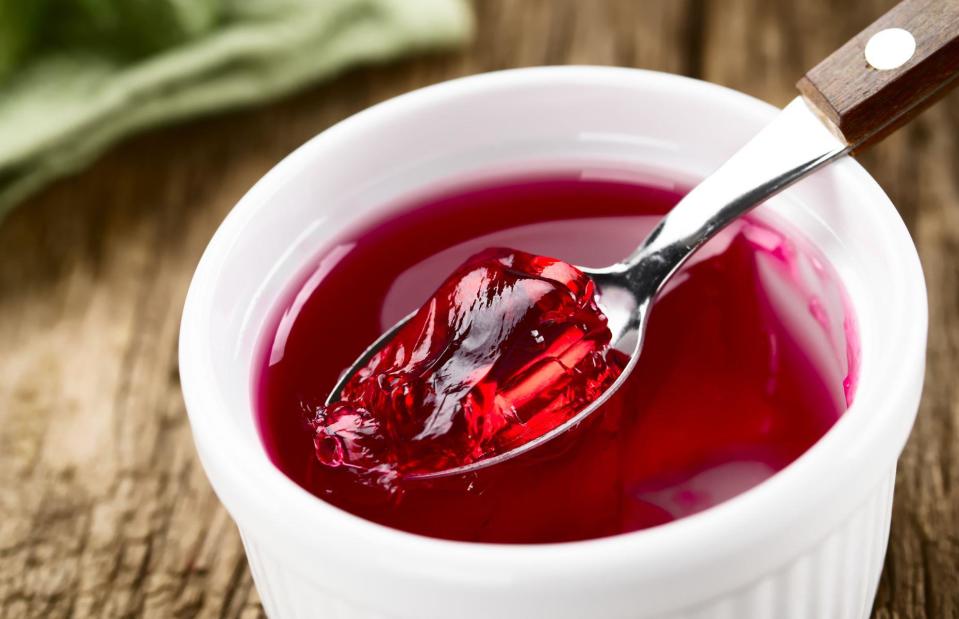
Ildi Papp/Shutterstock
Whether you love whole fruit jellies, the wobbly layer in a trifle or even the meaty gel in a pork pie, we have bad news. The magical, springy chemical bonds in gelatine that give jelly its bounce and wobble sadly don't survive the freezing process, so it’s worth avoiding altogether unless you want to be left disappointed.
31. Jelly

uladzimir zgurski/Shutterstock
Some vegan alternatives can be freezer-stable, but the thawing process is very hit and miss; if carrageenan or agar agar are the gelling agents in a packet dessert mix or mousse, tread carefully. To make sure you never have a jelly freezing disaster, you’re better off making it fresh and storing in the fridge, leaving it to set overnight where possible.
30. Watermelon

Shutterstock/Gamzova Olga
It's the ultimate warm day cooler, so it makes sense that watermelon would be great frozen, right? Wrong! Those delicate cell structures that deliver lip-smacking juice when fresh will be damaged beyond repair by the low temperature of the freezer. Left to defrost, your watermelon will collapse completely, leaving you with a somewhat slimy red mush.
30. Watermelon

marco mayer/Shutterstock
Those intent on tucking into a frosted watermelon treat could try using a powerful blender. This handy kitchen gadget will blitz the iced hunks into a tasty slush, creating the perfect base for a chilled mocktail or frozen cocktail (just make sure to use small chunks to avoid damaging your blender). For juicy slices, though, you’ll want to keep the fruit stored in the fridge.
29. Garlic

New Africa/Shutterstock
While it might be tempting to freeze excess garlic you have lying around, you’ll be seriously sacrificing its distinct texture if you do so. This is especially important if you’re making garlic-focused meals like buttery, herb-loaded garlic bread or a zingy aglio e olio spaghetti dish – we’d always recommend having a fresh garlic bulb on hand for these types of recipes.
29. Garlic

Ahanov Michael/Shutterstock
The pungent ingredient does retain its strong flavour when frozen, so one option is to finely chop the peeled cloves, then freeze in ice cube trays with oil or water. You can then use these as and when needed for stews, soups or sauces. That said, fresh garlic is always preferable in our opinion.
28. Icing

Ruth White/Shutterstock
If a picture-perfect aesthetic is your aim, don't attempt to freeze icing made with raw egg whites. While a sponge cake will freeze and defrost perfectly fine, any egg white in the icing can thicken and separate from its fellow ingredients as it thaws, causing unpredictable flaking – and thereby spoiling your flawless finish.
28. Icing

daysupa/Shutterstock
If you’re looking for an easy alternative that does freeze, some experts suggest using dehydrated egg whites in powder form to make your icing. Another handy tip many recommend is baking the sponge ahead of time but icing the sweet treat on the day you want to serve it. This will also help avoid any unsightly icing smudges, if you're baking for a special occasion.
27. Courgette

Real_life_photo/Shutterstock
Like a lot of fresh vegetables, courgette is another ingredient that boasts a high water content, meaning it’s best not to freeze it or you risk being left with a soggy, limp mess. This green or yellow vegetable also takes on an oxidised colour and taste when frozen, so we'd always advise against storing raw courgette in the freezer.
27. Courgette

PosiNote/Shutterstock
If you do find yourself with an excess of courgette, fry it in plenty of olive oil and add to homemade pasta sauces, curries or stews, which can then be frozen for a later date. This will stop the courgette from taking on an oxidised colour or smell, while providing you with a tasty dinner option when you’re low on time in the future.
26. Cream cheese
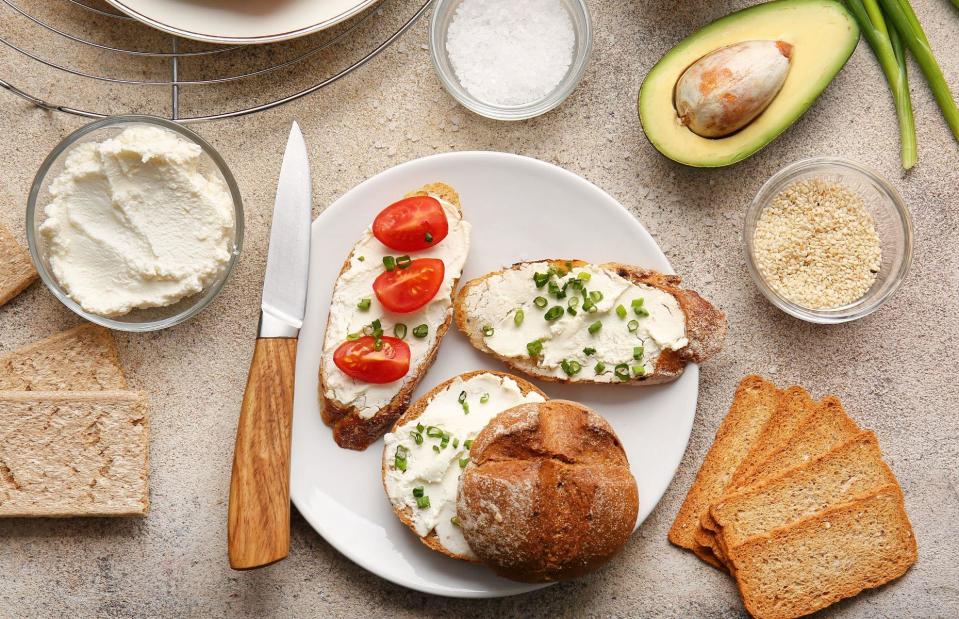
Pixel-Shot/Shutterstock
The high water content in cream cheese makes it prone to being spoilt by bacteria before you get around to using up the full tub. But be warned: store this high-fat cheese in the freezer and that gorgeously silky consistency we all love will turn grainy, crumbly and wet. Keep this one in the fridge to avoid disappointment when it comes to filling your bagels or topping your toast.
26. Cream cheese

SYED IBAD RM/Shutterstock
It’s worth noting that frozen cream cheese can still be used in cooking. For example, you could still stir a spoonful through soup to gift extra creaminess to the dish, or add a touch to a chocolate brownie batter. Just remember it’ll be no good eaten as is.
25. Yogurt
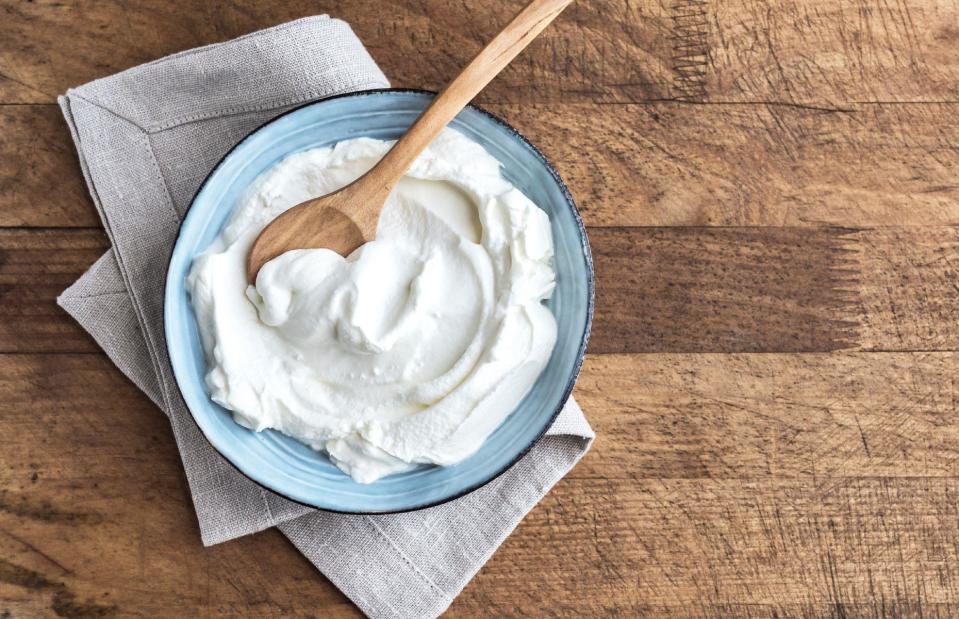
Oksana Mizina/Shutterstock
It's natural to want to preserve this cool, creamy ingredient for future use, but popping yogurt in the freezer simply isn't a good idea. When stored at sub-zero temperatures, the fats and water in yogurt will separate into large frost formations, creating a split texture – not to mention an extra-acidic taste when defrosted.
25. Yogurt

Alena_Kos/Shutterstock
There are some incredibly simple – and delicious – ways to use up leftover yogurt. For example, to make labneh all you need to do is salt the ingredient and strain away the excess whey. Breakfast yogurt pots topped with a handful of granola are another great option, while zesty tzatziki is a tasty savoury way to up your calcium intake.
24. Meringue

evgeniarusinova/Shutterstock
Whipped egg whites and sugar make for truly magical clouds of meringue when served fresh – but pop them in the freezer, and it's a different story. The difficulty comes down to the effects of moisture; as you defrost your French, Italian or Swiss meringue any condensation on its wrapping will cause the texture to soften, losing all that wonderful crack and crumble. Soft meringue toppings can also turn rubbery after defrosting, so we’d advise against storing them in the freezer, too.
24. Meringue

vasanty/Shutterstock
Your best bet for storing baked meringues is to keep them in an airtight container at room temperature in a dry environment. Do also make sure they are fully cooled before covering, otherwise they will go soft. If your meringue is topped with fresh fruits or cream, you’ll want to keep it refrigerated and lightly covered with cling film.
23. Tzatziki
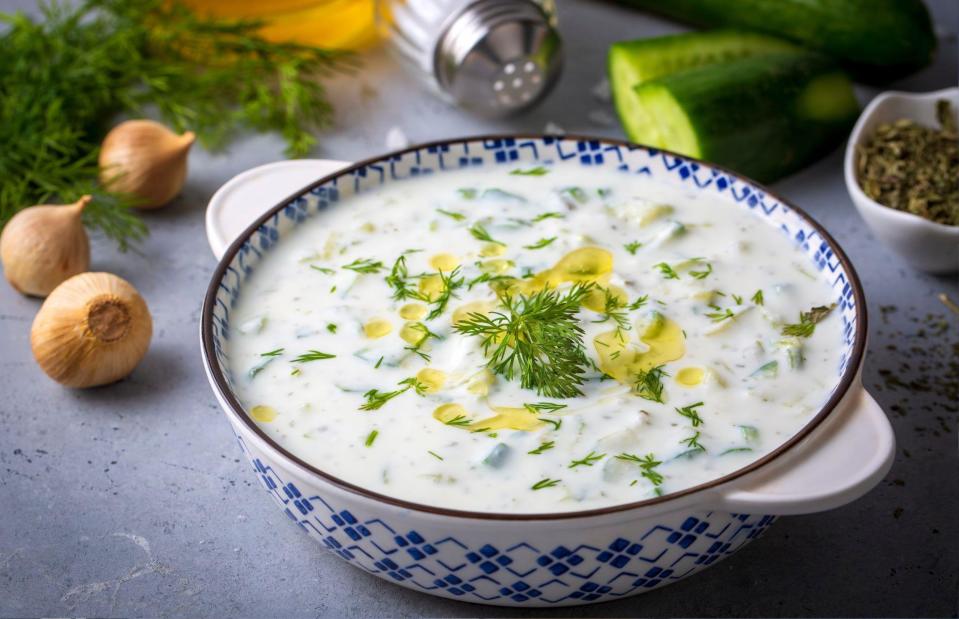
Esin Deniz/Shutterstock
Having this creamy sauce on hand is useful when you want to jazz up salads, wraps or grilled vegetables. But sadly, the freezer is not a safe place for the gorgeously garlicky dip. Watery cucumbers turn to a slimy mush as they thaw and their yogurt coating won't fare much better, as it will separate into curds and whey.
23. Tzatziki

SurrealSee/Shutterstock
Whether you enjoy it slathered over gyros meat or love to dip warm pitta into it, cooling tzatziki is best enjoyed fresh. Take our advice and stick to making it in small portions on the day you’re going to eat it – after all, it only calls for a few ingredients and doesn’t take long to whip up at all.
22. Coleslaw
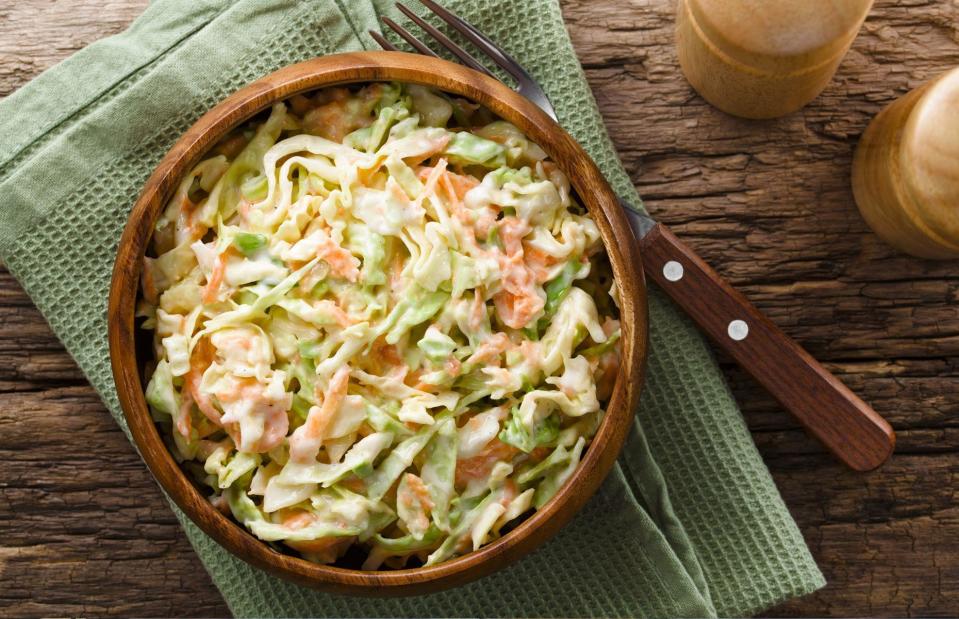
Idil Papp/Shutterstock
Vegetables with a high water content will cope poorly with the freezing process as their delicate, liquid-containing cells (which, when fresh, give them such a satisfying crunch) will be blown apart as the liquid expands into ice crystals. This means that the onion and cabbage in coleslaw will become limp and mushy, while the mayonnaise (which we'll get to later) will suffer its own issues.
22. Coleslaw

Maliflower73/Shutterstock
Nobody likes a disappointing coleslaw, so never store leftovers in your freezer. To avoid any issues, you’re best to keep this one as fresh as possible – aim to make it on the day you plan on eating it to ensure the veggies stay crunchy and delicious. If you buy a premade packet, store in the fridge and stick to the use-by date.
21. Single cream
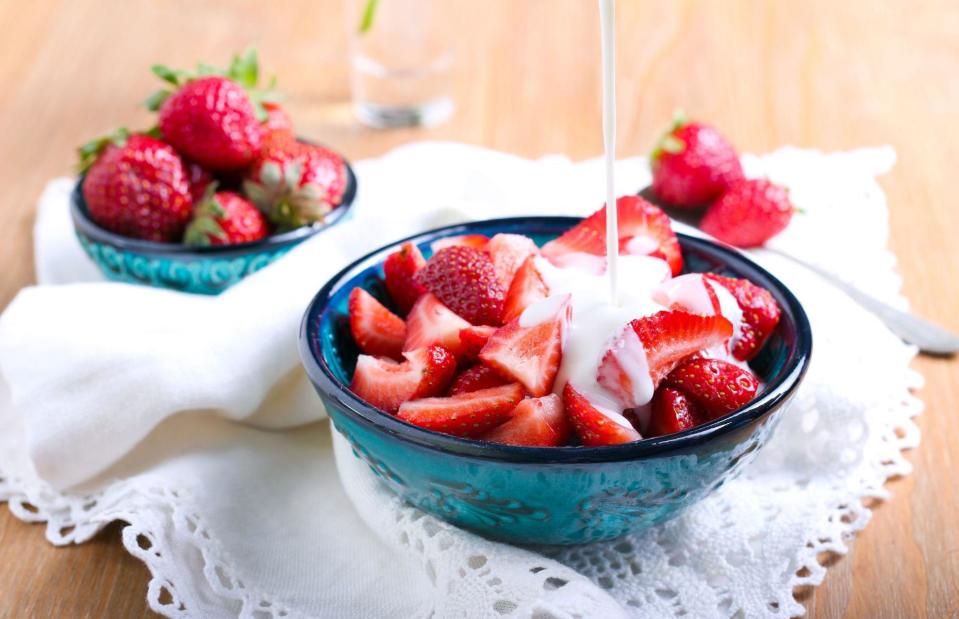
MShev/Shutterstock
Dairy products are essentially emulsions of fat and water particles, two constituents that react very differently to the freezing and thawing process. This may sound counterintuitive, since ice cream is one of the tastiest freezer foods of all, but plain old cream won't fare well in your freezer.
21. Single cream

Sea Wave/Shutterstock
It's all about the structure; a scoopable ice cream needs to be churned or whipped to prevent the growth of large ice crystals. The higher the fat content in a dairy product, the fewer ice crystals will grow, so if you really want to freeze cream, opt for double – or just stick to storing it in the fridge.
20. Radishes
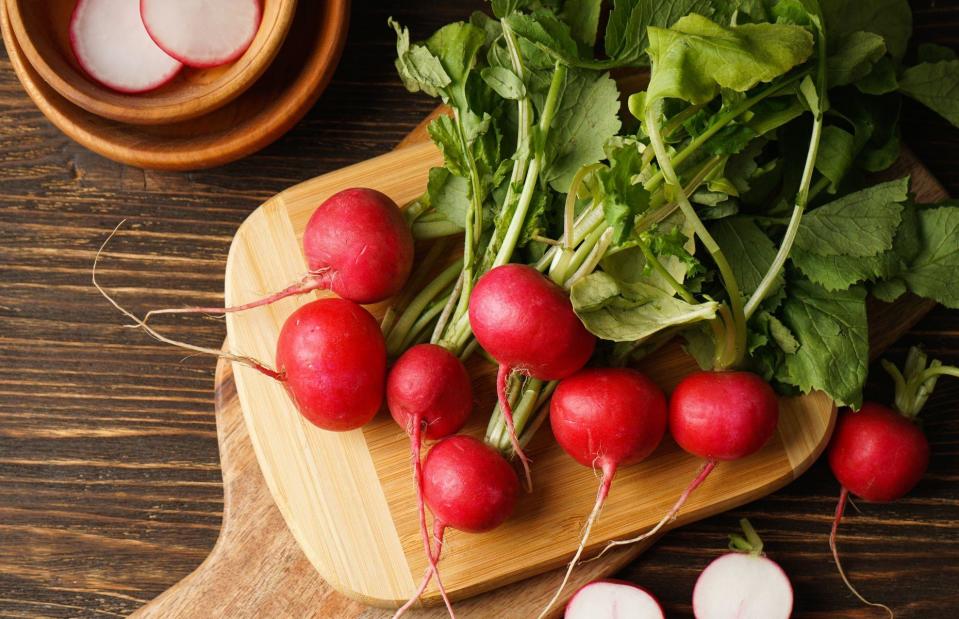
VI Studio/Shutterstock
These peppery salad vegetables add a pop of colour and flavour to summer plates – but if you have a glut from the garden or leftovers in the fridge, think twice before putting them in the freezer. The high water content of radishes makes them vulnerable during the freezing process, meaning they'll be soggy and sad after defrosting.
20. Radishes
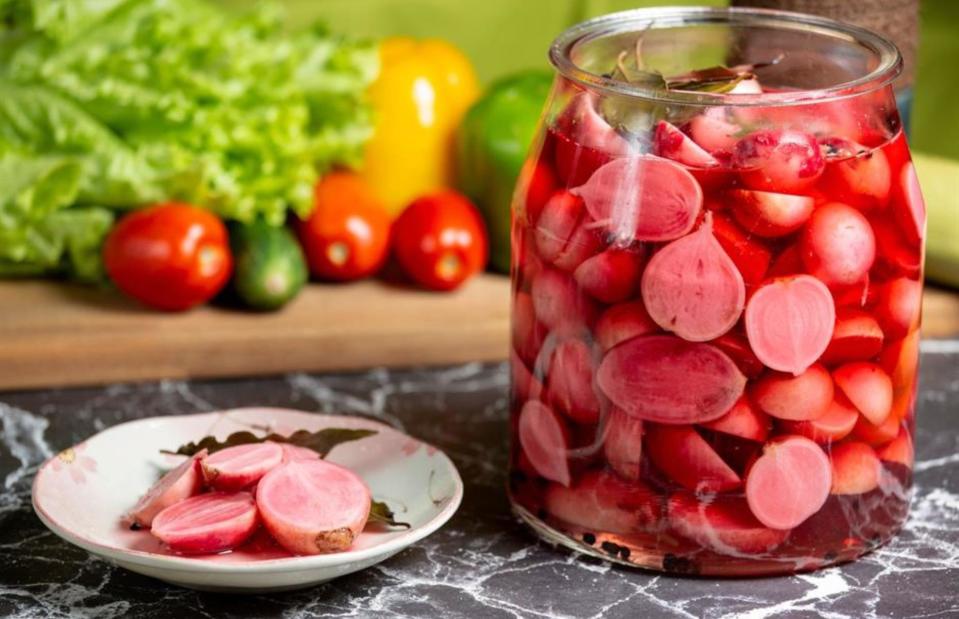
Alexey Khakimov/Shutterstock
If you’re looking for easy ways to preserve this veggie and want to make the most of its distinctive, vibrant flavour, how about pickling your excess radishes? It’s a much better idea than freezing, as it locks in colour and flavour for weeks, plus pickled radishes make a delicious addition to everything from rice and noodle dishes to sandwiches, tacos and zingy salads.
19. Herbs

nblx/Shutterstock
Aromatic Thai basil, fragrant coriander and tender tarragon can make or break a dish, but don't be tempted to store any leftovers in the freezer as is. If you do so, these soft herbs – a category that also includes mint, parsley, dill and chives – will turn black and slimy when thawed. Instead, process them to a paste with a protective glug of oil, then freeze in ice cube trays for ease.
19. Herbs

amirul.photo/Shutterstock
However, tougher herbs such as rosemary, bay leaves and lime leaves will fare far better frozen if left as they are – simply snip off the stems from the plant and pop in an airtight container or freezer bag for easy access, and to prevent any fallen leaves making a mess of your freezer.
18. Tomatoes
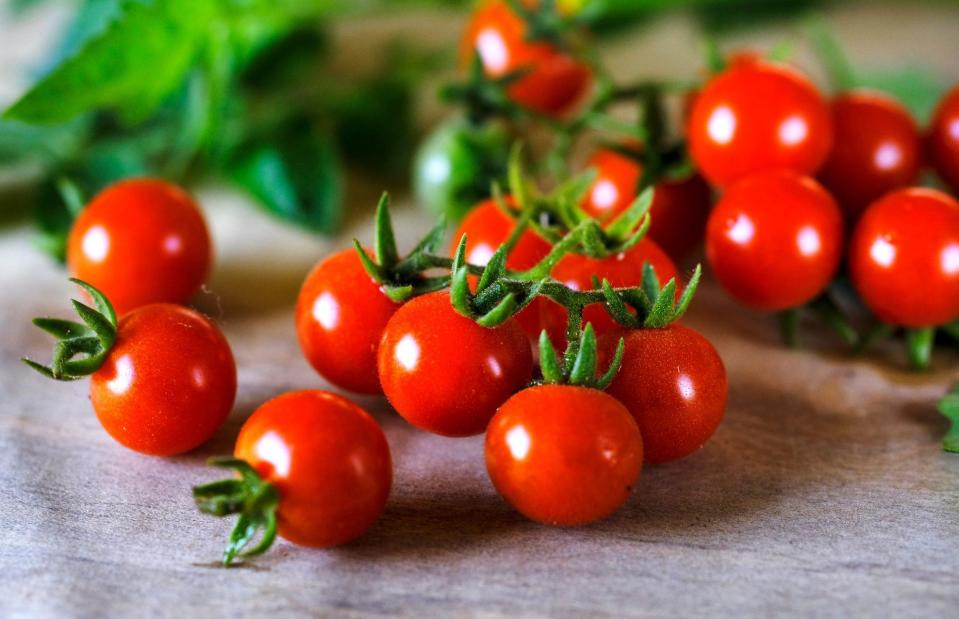
Vinayak Jagtap/Shutterstock
There's nothing so glorious as a perfectly ripe, fresh tomato – but if you freeze the fruit, what will emerge from your freezer will be nothing like its former self. From the gel-like pips to the complex structure of the flesh, the delicate texture of a tomato will be torn apart by expanding ice crystals as it freezes.
18. Tomatoes

id-art/Shutterstock
There are plenty of ways to preserve these red fruits and take full advantage of their short seasonal crops, though. We’d recommend that you cook and chop (or purée) tomatoes in batches, then freeze in individual servings ready for them to form the base of a tasty soup or pasta sauce at a later date.
17. Soft cheeses
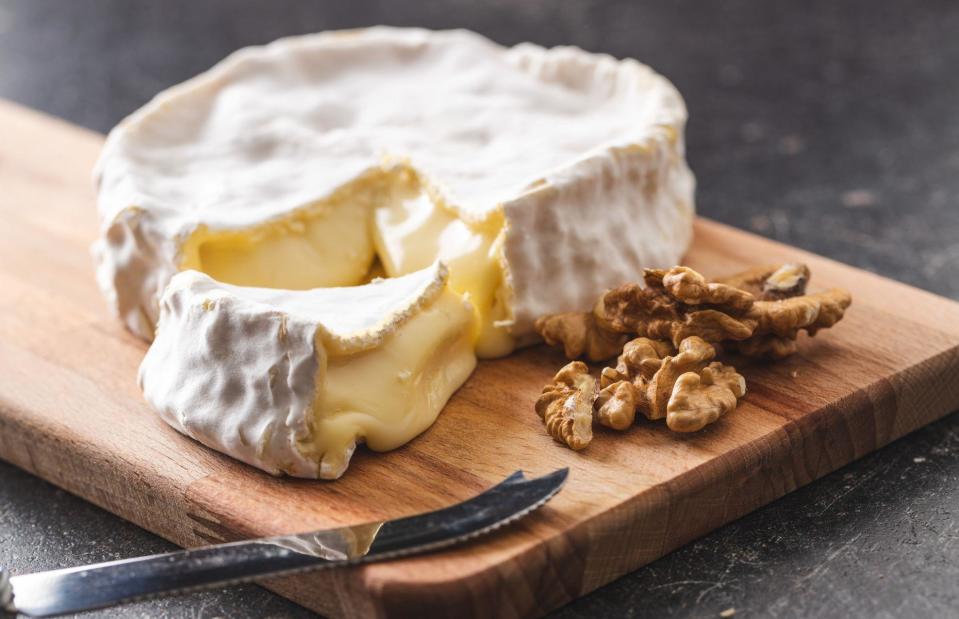
Jiri Hera/Shutterstock
The freezer is a great place to store leftover pieces of hard cheese; the likes of Cheddar, Parmesan and Stilton can all be frozen and then slipped into a soup, stock or bake for added flavour. What won't work, though, is attempting to preserve silky, runny cheeses with more complex textures, such as Brie or Camembert. That's because the higher water content within these cheeses means their structure will be severely impacted by sub-zero temperatures.
17. Soft cheese

barmalini/Shutterstock
To avoid any issues when you’re next putting together a cheeseboard, you’ll want to stick to storing these soft rind cheese in the fridge, removing them an hour or so before serving, so that they come up to temperature and their flavour can really shine. Not only will storing these cheeses in the fridge keep their shape and consistency, but it’ll extend their shelf life, too.
16. Custard-based desserts
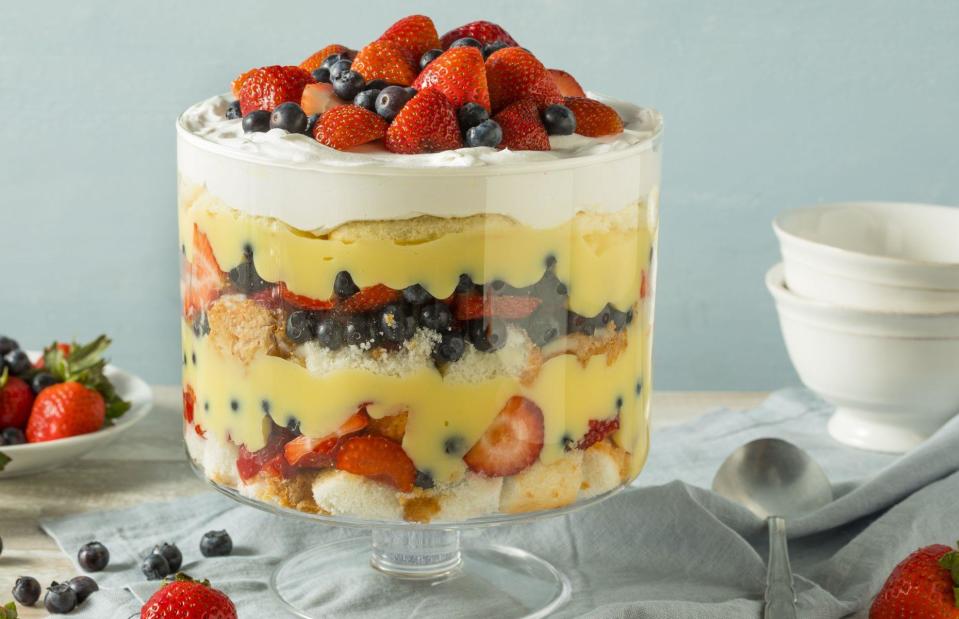
Brent Hofacker/Shutterstock
Trifles, brûlées and bakes filled or topped with custard are too good to waste, so we won't blame you for wanting to make your leftovers last. But while authentic egg-based custards are just divine enjoyed fresh, they undergo an unfortunate transformation as they defrost. The egg, cream and milk combo will lose its lovely silkiness and become watery and lumpy as the ice crystals melt.
16. Custard-based desserts

Catherine Murray/Shutterstock
A pouring custard, however, will fare better if first churned in an ice cream maker and stored for a short period of time in the freezer. In general, though, it’s best to stick to storing these sweet treats in the fridge where possible – it’s a good excuse to enjoy an extra portion when the expiry date comes crawling closer, too.
15. Flowers

Anna Pustynnikova/Shutterstock
Delicate rose petals or frothy elderflowers can make a beautiful addition to cakes and desserts. Some cooks even mill them into pasta dough or glaze them onto sourdough loaves for a beautiful look. But sadly any attempt to preserve their beauty in the freezer is doomed to fail; the petals will turn to a brown slush as the ice crystals defrost.
15. Flowers

Harry Base/Shutterstock
If you're desperate to press pause on edible blooms, try freezing them in water in an ice cube tray – then add to drinks for a pretty finishing touch. For decorative garnishes, though, you’re best sticking with fresh or dried edible flowers, which you can then sprinkle over leafy salads or use to add a pop of colour to an iced cake.
14. Sour cream

Brent Hofacker/Shutterstock
Like most other dairy products, sour cream is best eaten as fresh as possible. Storing it in the freezer and then defrosting it will cause the popular ingredient to separate, and you won’t be able to recreate its signature silky smooth consistency. Ultimately, this means it won’t be anywhere near as lovely slathered over baked potatoes or used as a topper for nachos.
14. Sour cream

Pixel-Shot/Shutterstock
That said, if you’ve got a pot in the fridge that’s going to go off soon and you throw it in the freezer, you do still have options; you can use defrosted sour cream in flavourful sauces, stews and soups to add a touch of creaminess or to help to reduce the spiciness of a dish. Alternatively, you could use it in baking, adding a dollop to a brownie or cake mixture.
13. Salad leaves
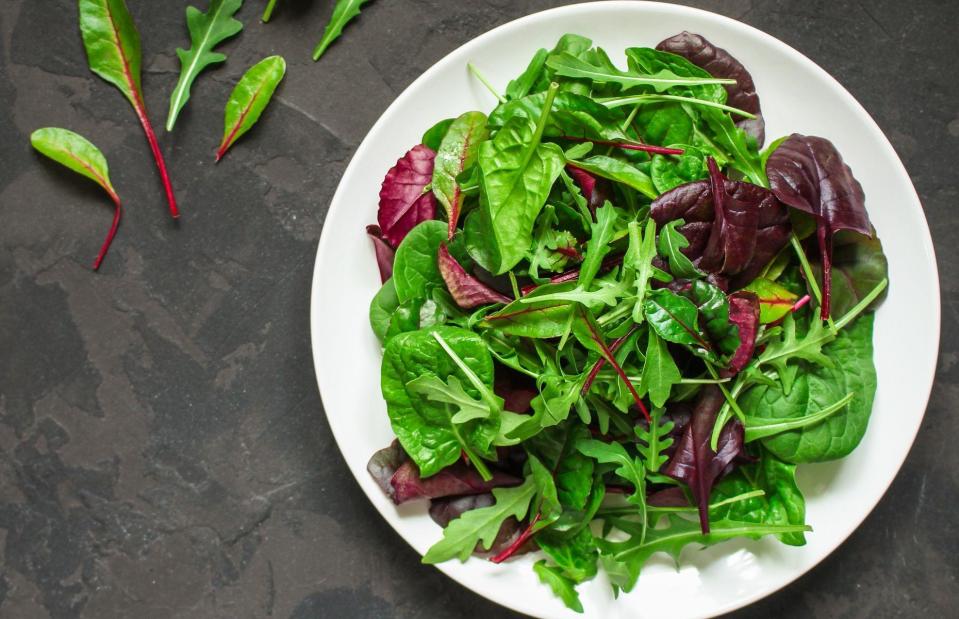
Alesia.Bierliezova/Shutterstock
Bagged salads and heads of lettuce are often wasted, with those delicate fresh leaves wilting quickly in our fridges. However, don't be tempted to try to prolong their lifespan with a stint in the freezer. The water-rich cells in each leaf will burst upon freezing, leaving you with an unappetising green mush.
13. Salad leaves

Nungning20/Shutterstock
But before you bin your half-eaten bag, check the varieties of leaf inside, because some leafy greens can be used in alternative ways to prevent waste. For example, baby spinach, beet greens and watercress can be blanched or steamed, then frozen in portions – you can then add these to smoothies, stews, soups and curries further down the line.
12. Cooked pasta

Nitr/Shutterstock
Always left with excess pasta after a meal? As tempting as it might be to freeze cooked pasta, it’s best avoided. When frozen, this starchy household staple can lose its shape and become a clumpy, mushy mess that’s far from its former glory.
12. Cooked pasta

L. Ganz/Shutterstock
If you do find yourself with leftover pasta and freezing seems like the only option, mix in any extra sauce from your meal and it’ll be less likely to come out of the freezer in one big lump. Just make sure you have enough sauce to cover the pasta. Cooked lasagne works just fine in the freezer, too, making for a great batch-cooked option; divide into individual portions so it defrosts or reheats quicker (you can heat straight from the freezer in the oven or air fryer).
11. Potatoes
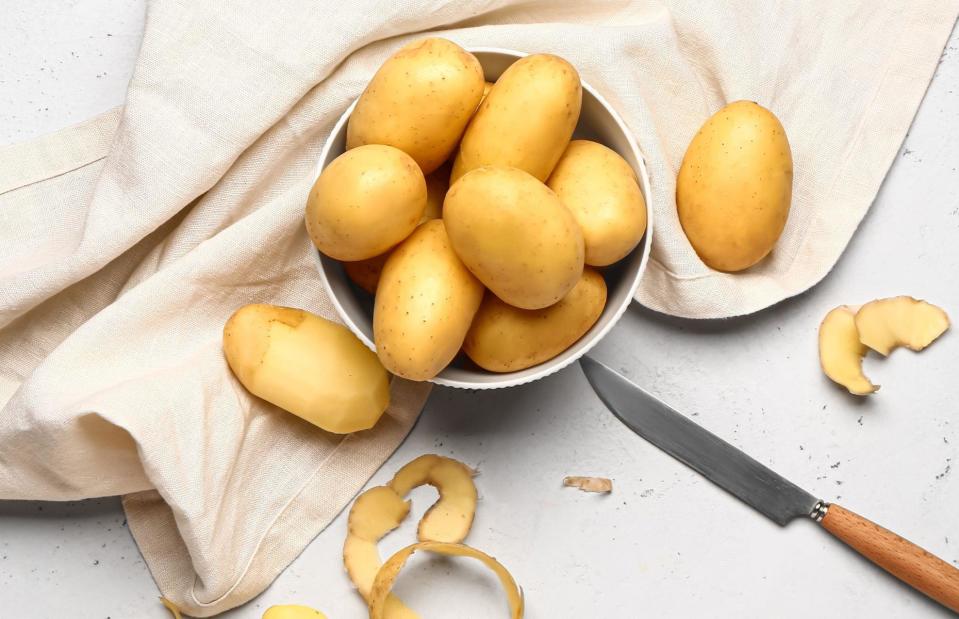
Pixel-Shot/Shutterstock
As handy as being able to keep this store cupboard essential in the freezer would be, the water content in potatoes makes them unsuitable for the freezer cabinet. To preserve the sweet springtime flavour of new potatoes, some say you can par-cook them before freezing; however, the overall results will be rather disappointing, so it’s worth cooking on the day of use.
11. Potatoes

Goskova Tatiana/Shutterstock
If you are looking for an easy, time-saving method, it's better to carefully cut your spuds into smaller pieces (a whole potato will take an age to defrost) and pre-cook them in the oven or steamer before popping them in the freezer. Alternatively, there’s no harm in having a packet of shop-bought French fries or wedges stored in your freezer for when you’re in a pinch.
10. Eggs
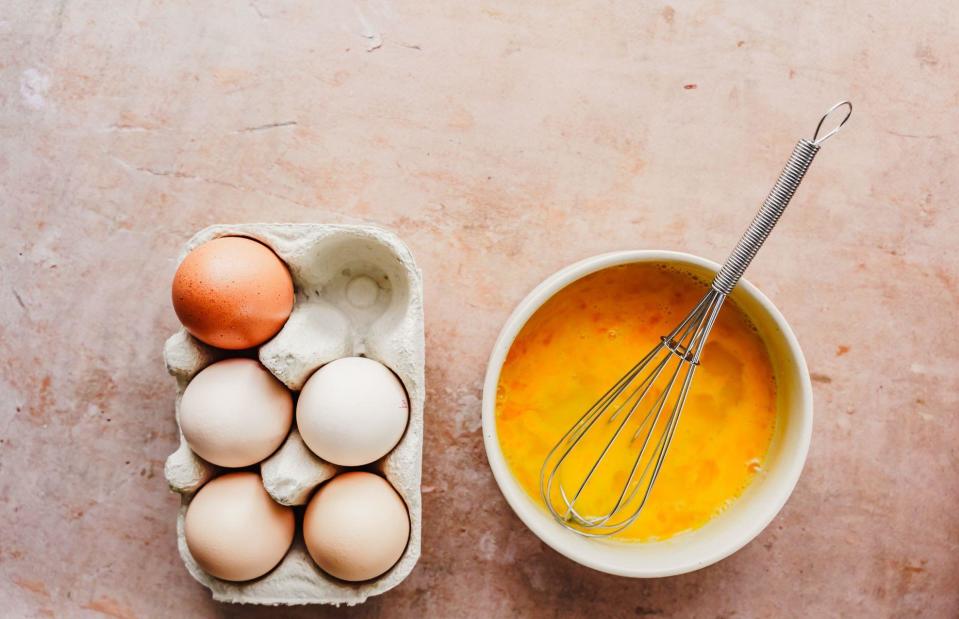
Sonja Rachbauer/Shutterstock
Eggs are so perfectly packaged – and perishable – that it's tempting to pop an excess directly into the freezer. However, if you do so the expansion of freezing liquids will once again be your enemy. The shells of whole eggs crack as they freeze, allowing bacteria in your freezer to contaminate the interior (and causing an almighty mess).
10. Eggs

New Africa/Shutterstock
A practical solution is to break and separate the eggs you wish to preserve, transferring the whites into ice cube trays for freezing. Yolks can change texture as they thaw, so if you’re opting to freeze, it's best to beat them with a little sugar or salt beforehand.
9. Avocados

Krasula/Shutterstock
Internet hacks will tell you that avocados can be frozen with careful preparation – chopping, dressing in lemon juice and fast freezing. However, that buttery texture and vivid green colour will be lost, leaving you with a mush that's pretty unappealing (unless you can hide it in smoothie), so it’s best avoided altogether if you can help it.
9. Avocados

SYED IBAD RM/Shutterstock
The smooth green fruits also turn brown when they're exposed to oxygen as they defrost, as enzymes in the flesh alter the chemical structure of the phenols – compounds that can be found in abundance in these heart-healthy fruits. Keep them fresh, ripening on the counter for a couple of days. You can also transfer avocados to the fridge to prevent over-ripening if you aren’t consuming them straight away.
8. Celery

NatalyaBond/Shutterstock
Freezing celery is a big no-no and it’s not hard to guess why. Similar to courgettes and tomatoes, celery has an incredibly high water content, meaning if you store it in the freezer you can expect to be greeted by a limp mess that’s lacking in both flavour and colour thanks to oxidation.
8. Celery

ArtCookStudio/Shutterstock
To enjoy it at its best, we recommend keeping celery away from the freezer and in the fridge. If you do find yourself with an excess amount, you could fry it off and add to a veg-loaded stew, pasta sauce or soup and then freeze these dishes, thawing as and when you need them. You'll thank us later.
7. Oysters
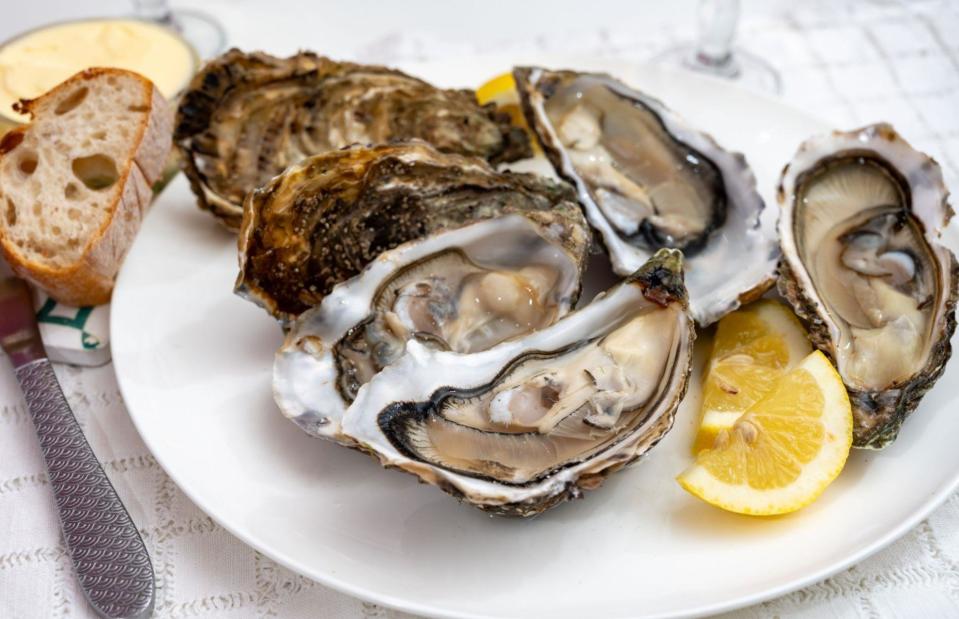
barmalini/Shutterstock
They may be a delicacy adored by many, but there are few foodstuffs as high risk as raw oysters. These filter feeders can harbour seriously harmful bacteria in their soft flesh, so they require careful handling at home. Freezing raw oysters is technically possible if you defrost them at a low temperature, but you should cook them soon after to sidestep the tricky textures caused by melting ice crystals.
7. Oysters

sogane/Shutterstock
To avoid getting sick, take our advice and cook your oysters before freezing them. Or, for the safest – and most delicious – way to enjoy them, it’s best to devour them when they’re as fresh as possible. If you're not sure how to handle oysters, we’d recommend leaving it to the specialists and ordering from a well-rated seafood restaurant or asking your fishmonger for advice.
6. Coffee

kuvona/Shutterstock
If you know your beans, you'll also know that the delicious aromatics that emerge from coffee mostly come from flavour compounds within the beans' natural oils. Preserving the life of these oils is a good idea, but the freezer can't help. All that frosty build-up in your ice box? That's atmospheric moisture – and ground beans can easily absorb it, ruining the stability of those essential oils.
6. Coffee

Ilja Generalov/Shutterstock
Any strong flavours will also be absorbed, giving your posh beans an aftertaste of the likes of garlic bread, fish fingers and diced onions. Once opened, keep your coffee grounds or beans in an airtight container and store in a cool, dark place at room temperature to ensure you have the perfect brew every time.
5. Fried foods
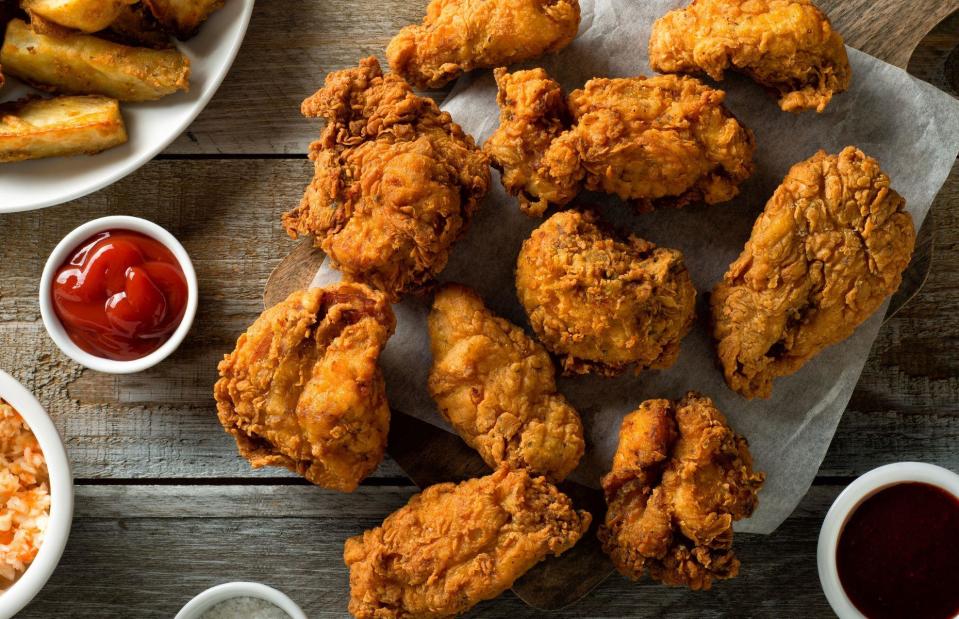
Foodio/Shutterstock
There's a good reason that the pre-frozen fried foods we buy at the supermarket contain such a long list of ingredients: maintaining the dry and crispy structure of fried foods is a real science. Fresh or homemade fried foods will succumb to one of the biggest problems associated with the freezing process: moisture. The delicate, bubbly structure of a batter – or the crispy coating of a fried ingredient – will buckle as it defrosts.
5. Fried foods

Paul Brian Kiser/Shutterstock
When your fried food cravings hit, the best option is to make your food of choice fresh – so they have a satisfying crunch and any batter is more likely to remain intact – or, opt for pre-frozen fried foods.
4. Mayonnaise

New Africa/Shutterstock
It can be tempting to freeze mayo-rich sandwich fillings and sauces – and if you've made a batch from scratch, you'll want to enjoy it for as long as possible. But hold on; this stable emulsion of oil, egg yolk and vinegar will completely lose its composure as it thaws. Expect a melty, clumpy mess that doesn't live up to its original texture.
4. Mayonnaise

barmalini/Shutterstock
You can of course avoid this altogether by putting the sauce in the fridge. Not only does this help keep it creamy, cool and delicious, but mayonnaise lasts a relatively long time in the fridge, so there’s really no need to store it in the freezer. It’s worth noting that if mayo is stored at temperatures that are too cold, the consistency can change, so keep it in the fridge door, where conditions are always slightly warmer.
3. Out-of-date bargains

Niloo/Shutterstock
With food prices skyrocketing, it's tempting to snap up reduced, nearly expired products and pile them into the freezer to enjoy later. But here's the rub: freezing doesn't restore a food's freshness, and thawing is a fine art even for the freshest of foods. Freeze those that are already borderline when it comes to food safety, and you have a recipe for food poisoning.
3. Out-of-date bargains

happycreator/Shutterstock
If you leave these items to defrost at room temperature, bacteria will have extra time to build – and if you warm them in a microwave, you risk accelerating spoilage. Expiry dates are there for a reason, and saving a little money just isn't worth the risk if you aren’t planning to eat the items straight away.
2. Cucumber
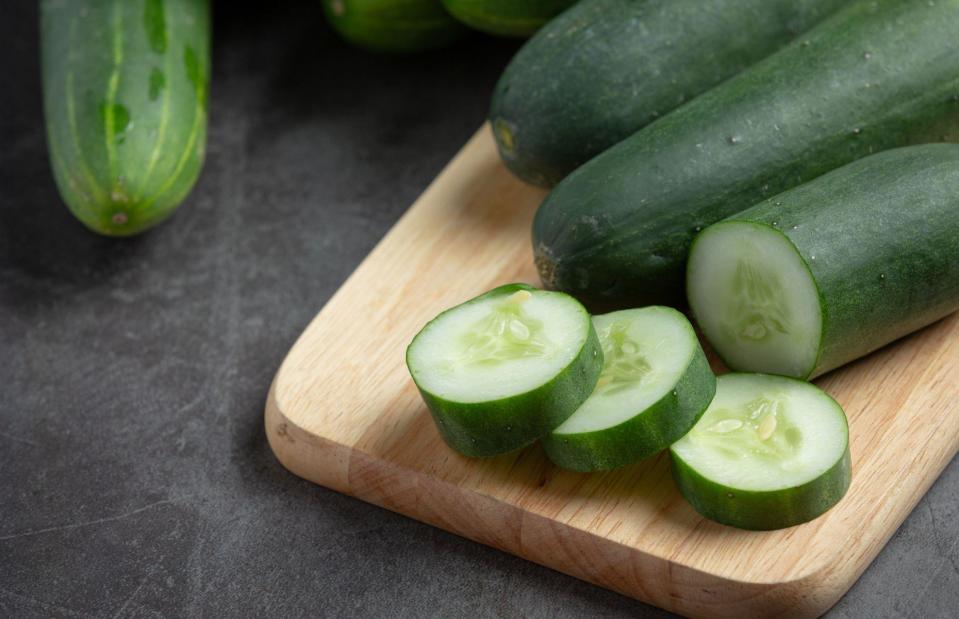
271 EAK MOTO/Shutterstock
Freezing cucumber batons may feel like the ultimate get-ahead canapé or snack-time trick, but it's not a great idea. A high water content means the cells walls in this classic salad vegetable will expand and burst as they freeze. That means that, when defrosted, the batons will be a bendy mush, that glorious crunch will be gone and your cucumber will be fit only for the compost bin.
2. Cucumber

itor/Shutterstock
Cucumbers store well at room temperature and will last on the countertop for around a week when uncut – they'll have a little more flavour this way, too. You can of course keep them in the fridge, especially once they’ve been cut as this will ensure the moisture is locked in.
1. Raw meat that's previously been frozen
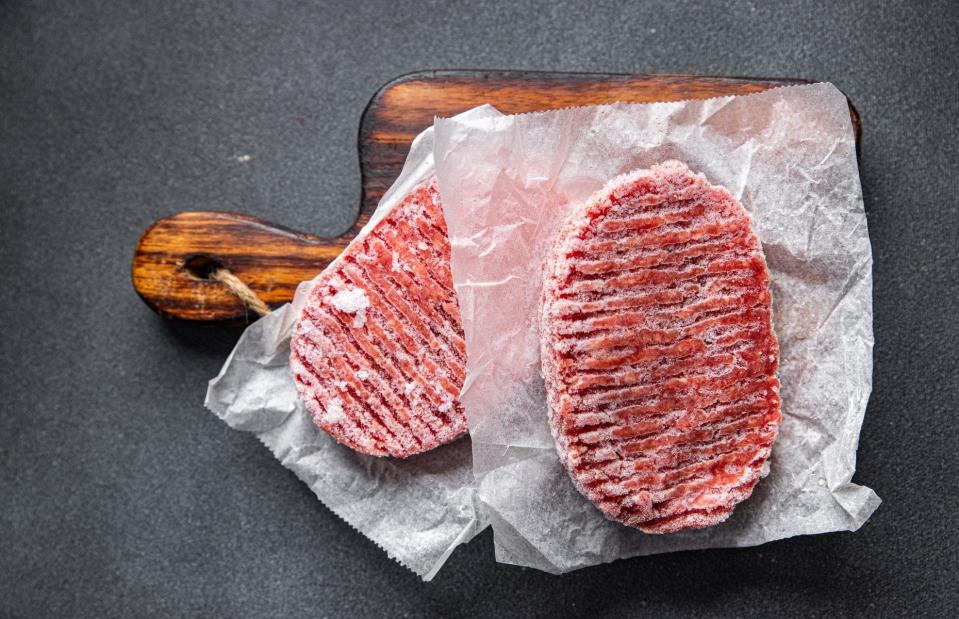
Alesia.Bierlieova/Shutterstock
It's worth remembering that the freezer pauses, but doesn't eliminate, bacterial activity within foods. This means that foods at high risk of containing pathogens, particularly raw meat, fish and shellfish, need extra-careful handling. When we cook these proteins before refreezing, the heat kills off most of the microbes present, lowering the risk of food poisoning. But, refreezing any raw meat, fish or shellfish that’s already been defrosted is a big no-no.
1. Raw meat that's previously been frozen

rigsbyphoto/Shutterstock
When defrosted foods are refrozen without being cooked, harmful bacteria are given extra time to multiply, which can cause a nasty bout of food poisoning. It’s worth noting that if you’re planning on freezing fresh raw meat and fish, it’s recommended that you freeze them as quickly as possible, as this not only extends the shelf life, but ensure that there’s no compromise on taste or texture.
Now discover the foods you should NEVER store in your fridge
Last updated by Lottie Woodrow.


